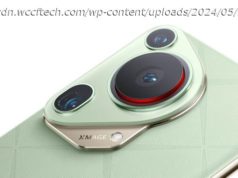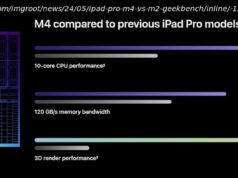The new Pixel 6 finds Google really upping its smartphone game, but is it better than Apple’s iPhone 13? We find out in this head-to-head comparison review.
If you’re a smartphone lover, Silicon Valley is spoiling you more than a little this year. Not only has Apple recently released the all-around excellent iPhone 13, but Google has just released the Pixel 6, its best phone yet. While Pixels have always been very good Androids, the sixth-generation model finds Google really pushing things to the limit, adding every feature it can to ensure it’s capable of competing with the very best flagships. This means it comes with a powerful dual-lens camera array, a big 4,614mAh battery, a speedy Google-made processor, and a gorgeous AMOLED display that supports a 90Hz refresh rate. Of course, as good as the Pixel 6 is, the iPhone 13 is certainly no slouch. Building on the already impressive specs of the iPhone 12, it adds a longer-life battery, improved camera sensors, the new A15 Bionic chip, and increased internal storage. In other words, it’s certainly the best non-Pro (or non-Pro Max) iPhone you can buy today. Does this mean it’s better overall than the Pixel 6? Read on to find out. The iPhone 13 is an example of Apple taking a “refinement not reinvention” approach. It looks all but identical to last year’s iPhone 12, flaunting the same flat-edged sides that you get with recent iPad Pro models. The first of only two noticeable differences is that the infamous notch is around 20% smaller. The second is that the two lenses on the rear of the phone have been given a diagonal (as opposed to vertical) configuration, which arguably looks a little more modish. On the other hand, Google went back to the drawing board for the Pixel 6. It features a very similar edge-to-edge display as the Pixel 5 (with a punch-hole selfie camera at top center), but its rear has largely been revamped. It now features a distinctive camera bar running across its width in the top half of the back, looking much like a space-age visor. It may not be to everyone’s tastes, but it certainly does a good job of telling the world you own a 2021 phone, rather than something from a year or so ago. Both phones are well-matched in terms of their displays. The iPhone 13’s 6.1-inch OLED screen comes 2532 x 1170 pixels, giving it a pixel-per-inch count of 460. As for the Pixel 6, it sports a 6.4-inch AMOLED display that carries 2400 x 1800 pixels, making for 411 pixels per inch. While you might assume that the superior pixel count gives the iPhone 13 the edge in this department, the scales tip back in the Pixel’s favor by virtue of its 90Hz refresh rate, something the iPhone lacks. This makes the screen update more smoothly and realistically, and together with the deeper blacks and colors of the Pixel’s AMOLED technology, makes for an impressive visual experience. Both phones come with an official IP68 rating, meaning that they can be dipped in up to 1.5 meters of water for up to 30 minutes. Despite being the same in this respect, we’re calling a narrow victory for the Pixel, mostly because of its more adventurous design. Winner: Google Pixel 6 Rather than opting for a Qualcomm Snapdragon, the Pixel 6 uses Google’s new Tensor chip. This is a processor made using 5nm transistors, implying that it should outperform previous generations, which had used 7nm-based chips. However, benchmarking tests have yet to assess just how fast the new processor is, so can we can only assume that it’s capable without knowing just how capable. Needless to say, with 8GB of RAM, you should expect the Pixel 6 to be able to handle pretty much every app and task you’re likely to throw at it. The same goes for the iPhone 13, which uses Apple’s A15 Bionic processor.






